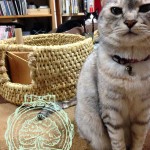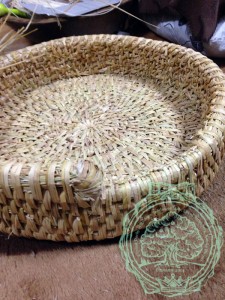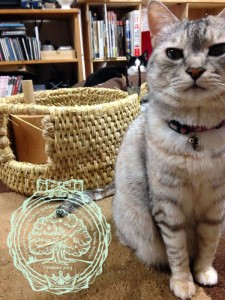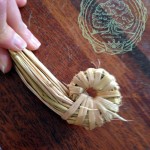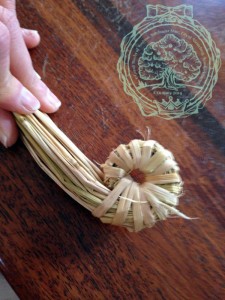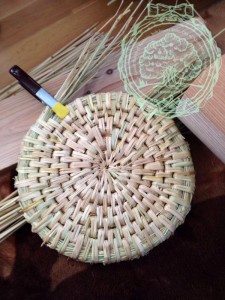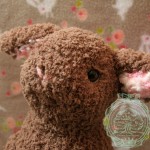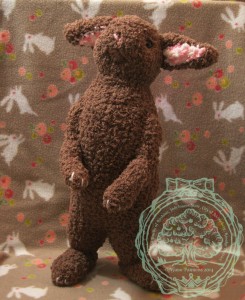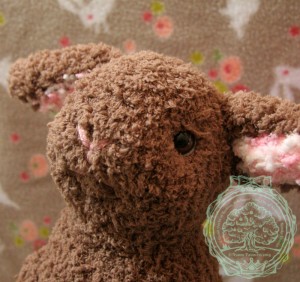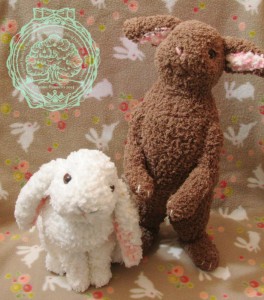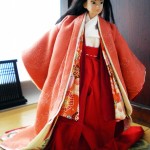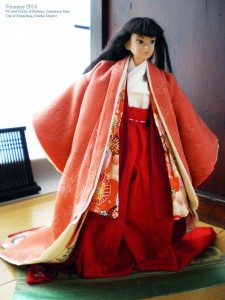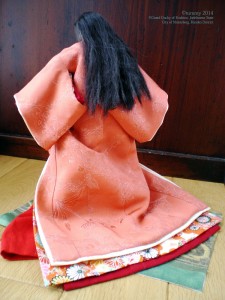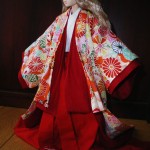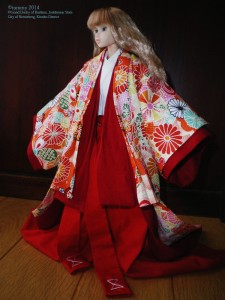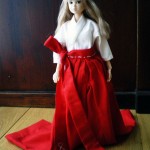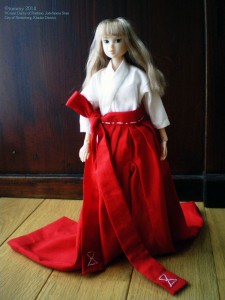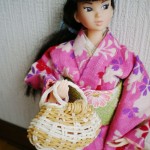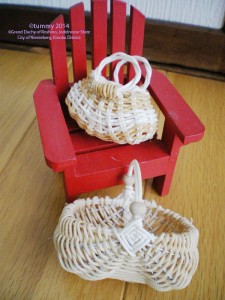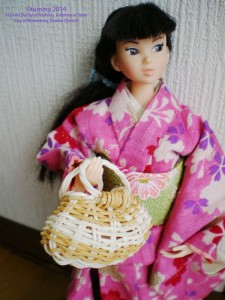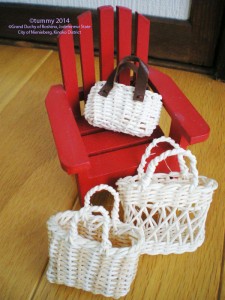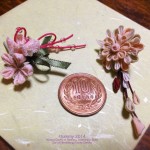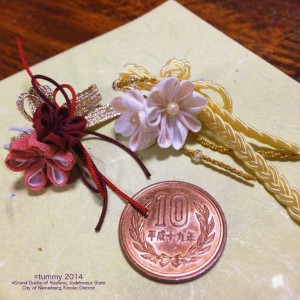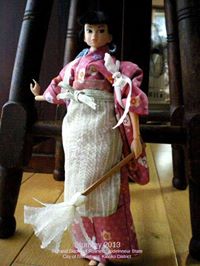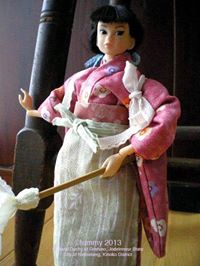Grand Duchy of Roshino, Jodelnneur State, City of Nienieberg, Kinoko District
ロシーノ大公国ヨーデルヌール州ニーニーベルグ市きのこ地区
Neko Chigura 2014 -1- 猫ちぐら1
新潟県では昔、農家でよく作られていたようです。
現在では、民芸品として人気があります。
底の部分の中心から、編み始めます。
“Neko Chigura” is a cat house made out of rice straws.
It was made mainly by the farmers in Niigata Prefecture in old days.
Today, it is popular as a folk art.
It starts weaving from the center of bottom.
Keep going until it reaches the size you want.
Doll’s kimono ~the Heian period 1~ 平安装束 -筒袖&長袴-
白い筒袖の着物に長い緋袴をはきます。
緋袴の紐の端に縫われている模様は、「立鼓」(りゅうこ)と言います。
I am now working for doll’s costume of the female nobles from Heian period.
The top is a white kimono with tight sleeves and
the bottom is a red long hakama.
The hourglass-shaped decorative stitching at the end of the belt of
red hakama is called, “Ryuko” (standing drum).
Tsumami-zaiku ornamental hairpins for dolls お人形のつまみかんざし
新年をお祝いするのにふさわしい、お人形のつまみ細工の簪を作りました。
To celebrate new year
I made some festive ornamental tsumami-zaiku hairpins (kanzashi) for dolls.
生地は主に羽二重、縮緬の古布を使っています。
Fabrics used: mainly habutae-shilk and vintage Japanese crepe clothes (chirimen).
Left: cherry blossoms.
Right: big chrysanthemum.
色が変わると、雰囲気が変わります。
Both are chrysanthemums.
Each color gives different type of impression.
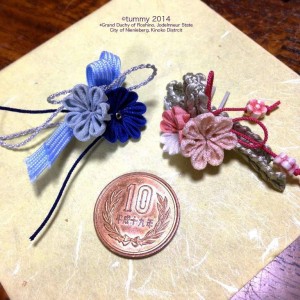 左は二重の花びらの菊、右は一重にビーズで花芯をつけてみました。
左は二重の花びらの菊、右は一重にビーズで花芯をつけてみました。
Left: a chrysanthemum with double-layered petals.
Right: a chrysanthemum with single-layered petal, and a bead in the center.
